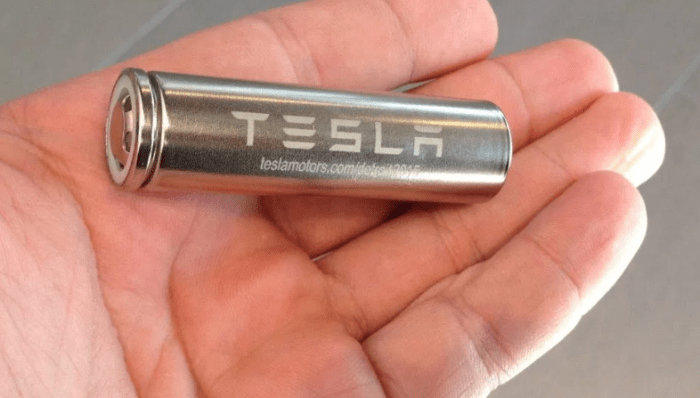I updated my previous post because I was surprised to learn people don't know the basic science of co2 emissions behind metal mining and refinement, and how 1 tonne of lithium battery in an EV easily adds up to 15 tonnes of co2 or 10 years roughly of combustion vehicle driving.
https://endless-sphere.com/forums/viewtopic.php?f=7&t=89002&start=3700#p1460666
To me, this is a mere simple IQ/puzzle test that anyone, ideally, should be able to pass, as long as they are presented with all the data!
So again from this article http://www.brusselstimes.com/business/technology/15050/electric-vehicles-emit-more-co2-than-diesel-ones,-german-study-shows
^You don't need to be a science genius to look at some basic well-established charts/data from the EPA on metal mining emissions to work this stuff out.
Most Tesla's are over 2 tonnes in weight because they house a large battery that would weigh close to 1 tonne when you include all the supporting metal, as they can't merely wrap 18650/21700 cells in tape or plastic like ebike batteries do for their packaging. A typical combustion car is conversely about 1 tonne.
https://en.wikipedia.org/wiki/Tesla_Model_X
P100D 5,531 lb (2,509 kg)
Then just start looking at the co2 emissions of metals used on the cells.
All 18650/21700 cells are coated in a thick amount of nickel to prevent corrosion and also ensure they have high electrical conductivity. The canister itself is steel.
Here is a document from the
EPA (Environment Protection Authority) of a typical mine and its emissions on nickel mining/refining.
https://epa.tas.gov.au/documents/proto%20resources%20-%20barnes%20hill%20nickel%20laterite%20project%20dpemp.pdf
So its >>
"57.9 tonnes of co2 emitted per 1 tonne of nickel."<<
Magnesium is about 35times co2 in its produced weight.
You will find similar numbers for other major metals, copper, aluminium average about 10 times their own weight.
https://www.businessinsider.com.au/cobalt-price-rally-2017-3
https://www.metalary.com/lithium-price/
Cobalt and Lithium are very expensive per tonne, they also move around significantly, but considering their costs its very safe to say they emit at minimum probably around 50 times their weight in co2.
As the metals chart of co2 emissions for metals various greatly, so does gold. There are plenty of sites that reference Gold is at roughly an incredibly high 30,000kg CO2 per 1 "kg" produced, so its 30,000 times its own purified weight in co2, which helps explain why its so expensive, the energy to find/produce/refine the metal adds to the cost significantly.
This is typical for these elements, the more expensive it is per gram, the more the apparent is the fact that it required more energy and thus co2 emissions to produce that gram of metal.
Platinum and Gold are "roughly" the same price in dollars per ouch/gram/tonne. Also interestingly, they cause "roughly" the same amount of co2 emissions in their weight via the process of mining/refinement.
https://www.ethicaljewels.com.au/2018/10/08/recycled-precious-metals-platinum-group-metals/
Based on figures from the World Gold Council (3), mining as a source emits approximately 38,100 tonnes of CO2e for every one tonne of gold produced.
primary production of PGMs emits CO2e at the rate of approximately 77,000 tonnes for every one tonne of PGMs.
http://www.iaeng.org/publication/WCE2015/WCE2015_pp863-865.pdf
https://ipa-news.com/assets/sustainability/Environmental%20Profile_LR.pdf?PHPSESSID=86216a7ceff02ff3201d4a79532a300c
The reason I am showing gold/platinum cost/co2 relationship is to help make it clear that when a EV battery pack costs $10,000 at minimum (This is just Tesla's claim and Tesla still lose money) it ultimately proves there was a lot of co2 emissions created making that battery pack, the sourcing of the various metals of lithium, cobalt, nickel, aluminium and steel make it complex to see the co2 emissions from the cell production, what makes it easy to see the real co2 emissions is just the resulting cost.
https://www.wsj.com/video/the-secret-to-why-a-tesla-costs-so-much-hint-batteries/65F3A21D-0837-4DA6-B739-612124815603.html
This is why Nate Hagens Youtube videos are interesting, because he talks about the theory that energy and money are very closely linked, if not the same thing more or less. https://endless-sphere.com/forums/viewtopic.php?f=7&t=89002&start=3700#p1461131
And we see that so clearly with the cost of gold and its co2/energy production requirements.
The probabilities of about 1 tonne Tesla battery packs co2 emissions being about 15tonnes is incredibly generous and is really giving the battery pack the benefit of the doubt.
To me people who can't understand these charts/data that are written very clearly by even people from the EPA have serious problems with reality and probably aren't worth talking to if you have tried to show them the data just once.
So again, 15tonnes of co2 "pre-emitted" is about 10 years worth of traditional combustion driving, but for the EV thats
before you take your EV first drive, and you will likely be charging your EV from a dirty high grams/KWh electricity source, like what we see on EM for Germany etc https://www.electricitymap.org/?wind=false&solar=false&page=country&countryCode=DE&remote=true
The energy it will take to recycle lithium cells will also be substantial, I can only hope it doesn't end up in a landfill like with solar panels. Everyone envisioned solar panels being cleanly recycled, but they just get put in mass landfill in Australia. https://www.youtube.com/watch?v=0L_lzUhitx8
For combustion cars it works out like below.
http://ecoscore.be/en/info/ecoscore/co2
https://www.transportenvironment.org/what-we-do/cars-and-co2
So for petroleum fuel it's around 120 g CO2/km
120g of co2 is "0.00012 tonne"
For the average car to make 100,000km of driving that is, 100,000km x 0.00012 = 12 tonnes of co2.
I drive an LPG car which is about 83 g of CO2/km
100,000km x 0.000082 = 8.2 tonnes of co2.
If you include the co2 emissions to charge an EV then it continues to get incredibly bad for EVs, as the Renewable energy state of South Australia is currently emitting 462grams of co2 per KWh produced. Not very good for a state that has 2,142MW of installed wind-farms for 1.6million people who consume on average 1500MW of power and have the most expensive electricity in the entire world.
https://www.electricitymap.org/?wind=false&solar=false&page=country&countryCode=AUS-SA&remote=true
I don't have anything against EV's specifically unless you are claiming it's saving the planet with lower emissions, there is no logical way that is possible. But this is becoming a big problem, people continue to push lithium EVs including Tesla battery PowerWalls/Grid storage as somehow a magical way to massively lower emissions when it can only make things worse.





